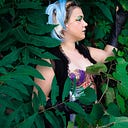Member-only story
The Weirdest Things My Teachers Said to Me: Part 2
“It just doesn't say ‘Africa’ to me,” said my art teacher, looking at my colorful watercolor painting of several stylized humans surrounded by swirls and trees. I wasn’t sure she realized she was visibly curling her lip in disdain.
“You said the assignment was ‘Africa-inspired,’” I said. I pulled out a small book of African iconography and showed her a similar motif. “I was inspired by African art. See, the swirls represent—”
She waved her hand dismissively. “My grade is final,” she said.
I’ve been artistic since a young age, when I endlessly sketched animals, painted miniatures, and made a serious effort to modify my Barbie dolls to look more natural. In school, I was always the one approached by my peers to draw something for them whenever the teacher gave any vaguely creative assignment. Others saw my admittedly not-good sketches and still asked if I had “traced” them.
As with most public schools, art education was a luxury that didn’t help us pass the standardized tests, and so not a priority for the school board. In high school, however, there was finally an art teacher, a wonderful classroom filled with paints, pencils, and pastels, an art club, and an annual art contest. My little creative heart sang with joy, and on the first day of school, when Mrs. Jones asked everyone to…
